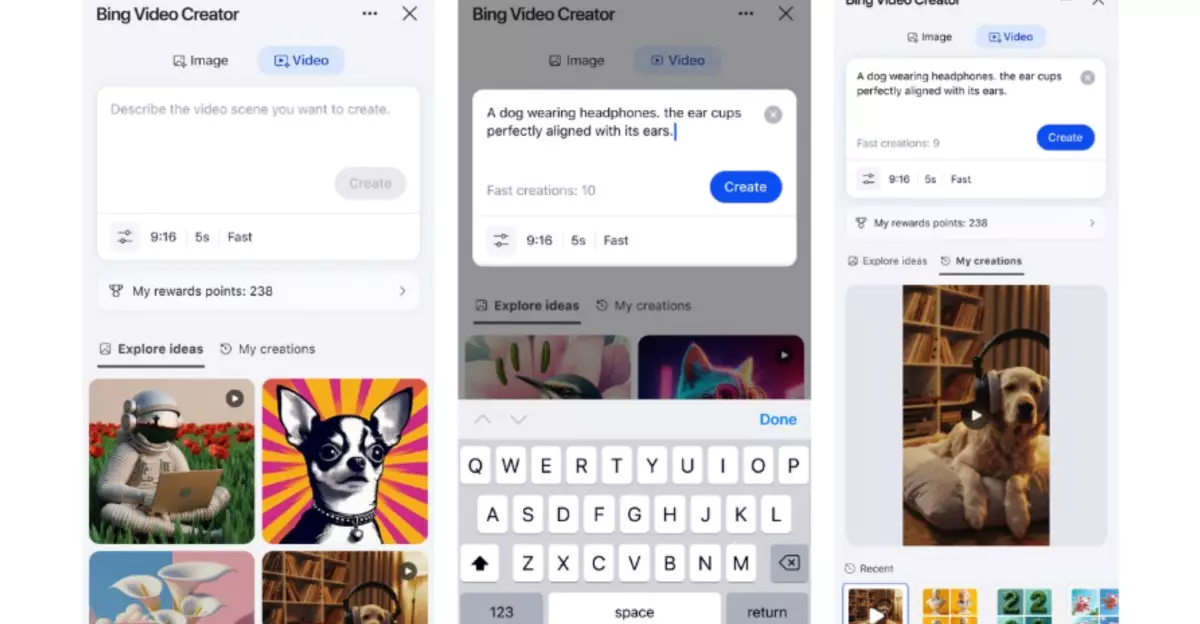In an exciting move that could reshape the landscape of video content creation, Microsoft has unveiled its latest innovation: an AI video generator integrated into the Bing mobile app. This announcement marks a significant evolution for accessibility in creative industries, especially for those who might have felt restricted by the subscription models associated with advanced tools like OpenAI’s Sora. By democratizing the capabilities of AI, Microsoft signals a commitment to fostering creativity in an increasingly digital world. The implications of this technology extend far beyond mere convenience; they propose a shift in how we perceive barriers to content creation.
Leaving Behind Traditional Constraints
Traditionally, high-quality video production has been often confined to those with significant resources and technical know-how. Microsoft’s new initiative reinvents this narrative by providing a platform that allows anyone to generate short video clips seamlessly. Users can tap into the power of AI not just for entertainment or personal expression but as a tool to enhance various aspects of life—from education to social media engagement. The idea that creativity should be “effortless and accessible” resonates deeply, promising a future where individual expression is no longer hampered by technical limitations or financial constraints.
User Experience: Simple Yet Effective
Accessibility appears to be a core focus for Microsoft with this new Bing Video Creator. The app’s user interface simplifies the process of video creation to a few taps, inviting users to engage with AI technology without intimidation. This focus on user experience can encourage more people to experiment with digital storytelling. Upon launching the Bing app, creators can easily access the video function, choose between creation speeds, and even queue multiple video generations. The introduction of both a “Standard” and “Fast” option caters to varying needs, allowing users to prioritize either quality or expediency based on their preferences.
However, while the interface is user-friendly, the actual quality of the generated videos raises some concerns. Initial examples showcase limitations in graphical fidelity, with characters appearing somewhat cartoonish and movements lacking the fluidity seen in other AI models, such as Google’s Veo 3. This could deter users seeking professional-grade content. Nevertheless, it’s essential to contextualize these early outputs within the broader trajectory of AI development. Refinements are inevitable, and the foundational capabilities hinted at in these demos reflect the immense potential yet to be unlocked.
Changing the Landscape of Engagement
In an age where video content is increasingly dominant, Microsoft’s foray into AI-generated video is timely. Digital media consumers crave novelty and creativity, and tools like Bing Video Creator empower everyday users to produce content that engages audiences in new ways. Whether this is for personal blogs, educational content, or social media posts, the ability to generate personalized videos with just a few words can revolutionize how we share information and express ourselves.
Moreover, the integration of a reward system for using faster video generations creates an additional incentive for engagement. By blending creativity with a gamified experience, Microsoft effectively nurtures a community around its innovative tools, inviting users to participate in a collective journey of exploration.
Future Implications for AI and Creativity
The emergence of such accessible AI tools raises critical questions about the future of creativity and content generation. As tools become simpler to use, we may see an influx of new voices entering the digital space—voices that may have once felt stifled by technical complexities. This flow of fresh ideas can lead to a richer tapestry of narratives and representation, making the digital sphere a more diverse and dynamic environment.
However, it’s equally important to approach these developments with a sense of responsibility and caution. As AI becomes more embedded in creative practices, considerations around copyright, originality, and ethical use will necessitate rigorous discussion. The balance between encouragement of creativity and the need to uphold integrity in the creative process will shape the path forward.
In essence, Microsoft’s entry into AI video generation is a beacon of opportunity. While challenges remain, the potential for innovation in creativity through such technology is monumental, beckoning a future where everyone is empowered to transform their visions into engaging visual narratives.

